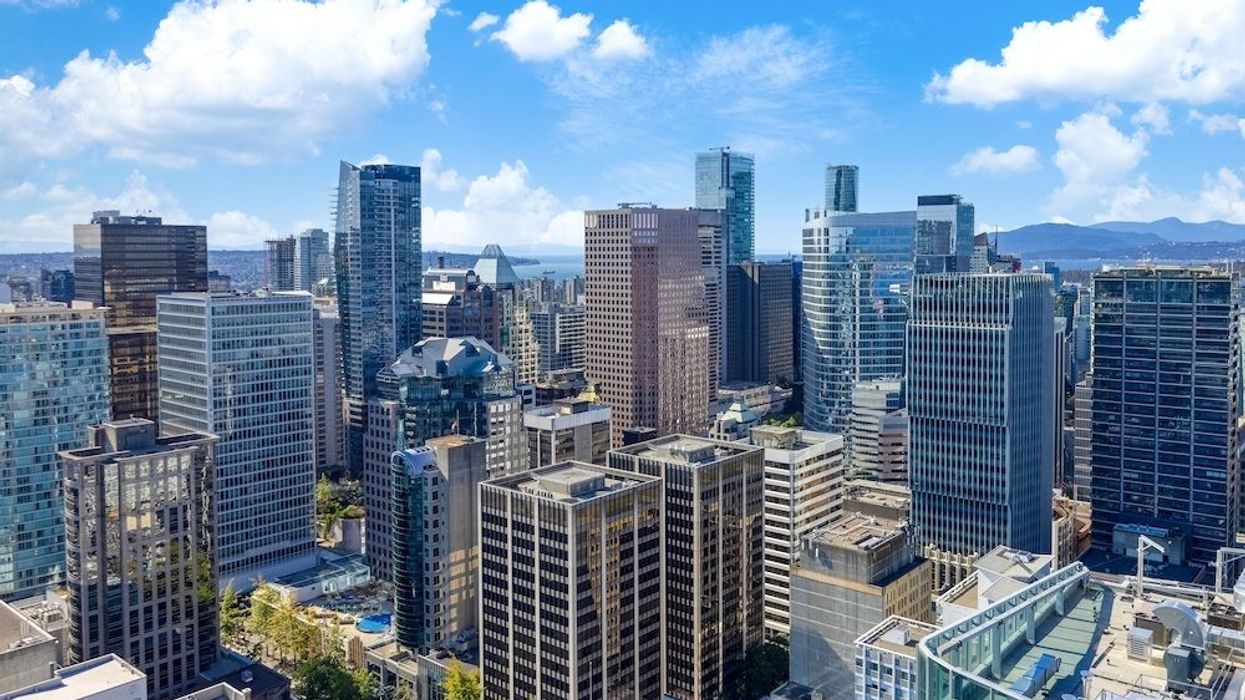Office vacancy rates in the country's two largest markets inched up once again during the second quarter of the year, says a new report from Colliers.
In the Greater Vancouver Area (GVA), office vacancy hit a five-year high of 7.4% in Q2, up noticeably from the 6.5% rate seen just one quarter prior. This increase was led by downtown offices, with a 10.4% vacancy rate, up from 8.4% in Q2. Suburban offices, on the other hand, actually saw a small drop in vacancy, sliding from 5% in Q1 to 4.9% in Q2.
Colliers notes, however, that "even with this record run up in vacancy, the GVA's office vacancy remains the lowest in major markets across Canada." In fact, BC is the only province with cities included in the report that have single-digit vacancy rates.
Toronto, which also saw an uptick in Q2, is a prime example of a major market with a noticeably higher vacancy rate. It hit 10.5% in Q2, up slightly from the 10.4% rate seen at the beginning of the year. Downtown offices had a slightly higher vacancy rate (10.6%) compared to suburban offices in the city (10.4%).
As deal volume continues to lag in the city's downtown core, Colliers says major landlords are "recognizing the need for move-in ready space among traditional and/or institutional occupiers who are more likely to direct their workforce back into the office under provisional measures."
Other major cities like Ottawa, Waterloo, Winnipeg, Regina, and Saskatoon all saw office vacancy increase. Meanwhile in Montreal, it stayed on par with Q1 at 14.7%.
In the fight against remote work, some landlords are looking for new ways to attract tenants. In Ottawa, for example, Colliers says landlords are "becoming more creative in attracting and retaining tenants by offering employees a better office environment and making work-from-home less appealing." This has included additions such as hotel-style lobbies, food halls, gyms, game rooms, conference centres, and lounges.
Interestingly, Calgary, which has far and away the highest office vacancy rate of any major city in Canada, coming in at 27.2%, actually saw a small drop from Q1's 27.7%. The change was spurred by a drop in suburban office vacancy, which fell to 22.8%, while downtown offices held their same 30.1% rate from the previous quarter.
Edmonton similarly saw a decline in office vacancy, falling to 19.9% from 20.1% -- something Colliers says could soon change following the recent Conservative party win, "specifically within the Government district, as there is a high probability that they will reduce both the size of the bureaucracy and Alberta Health Services."
Despite typical supply and demand expectations, vacancy rates rising and falling did not directly translate to inverse changes in average rent prices. Toronto and Vancouver, despite having more vacant space, both saw price increases, along with Waterloo, Winnipeg, Calgary, and Edmonton. Saskatoon, Victoria, Regina, Ottawa, and Montreal, on the other hand, all saw their average rent prices slip.





















